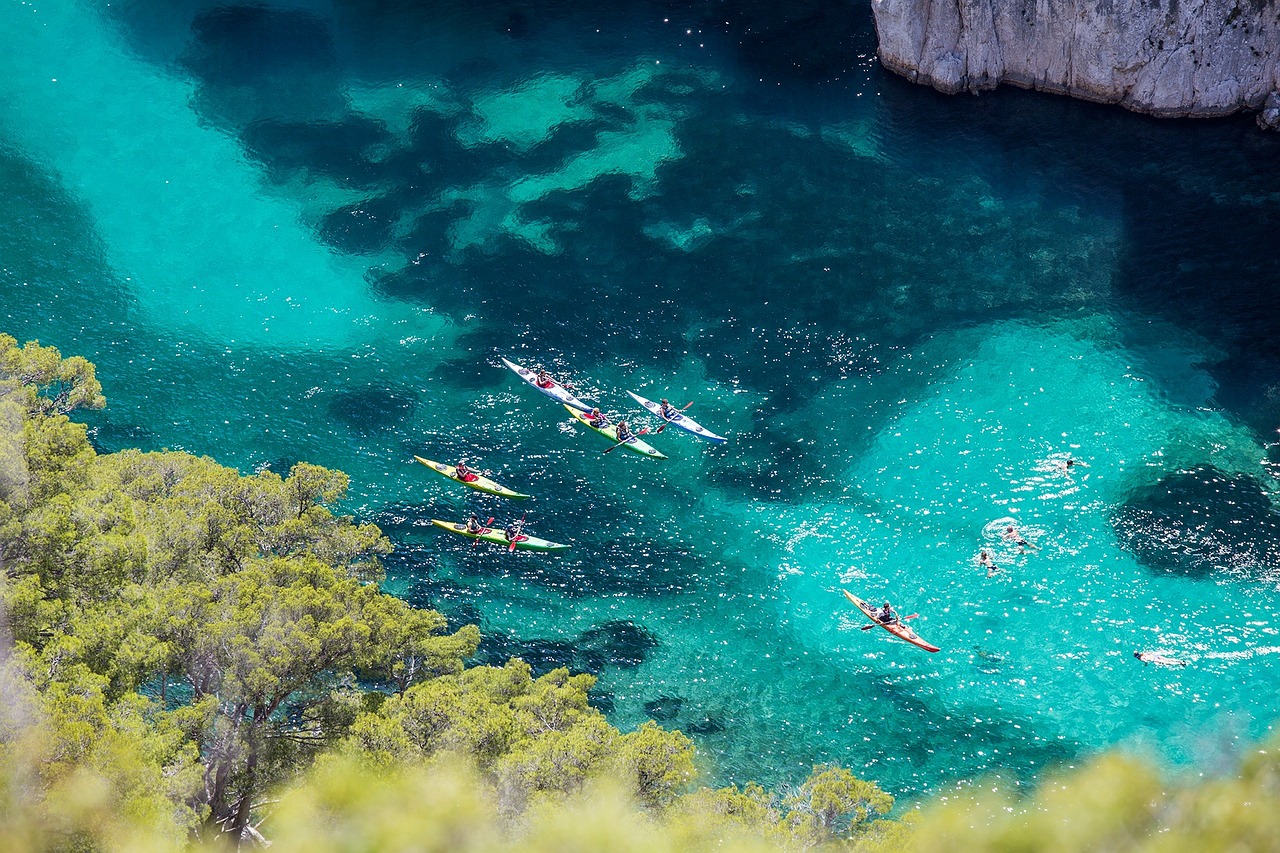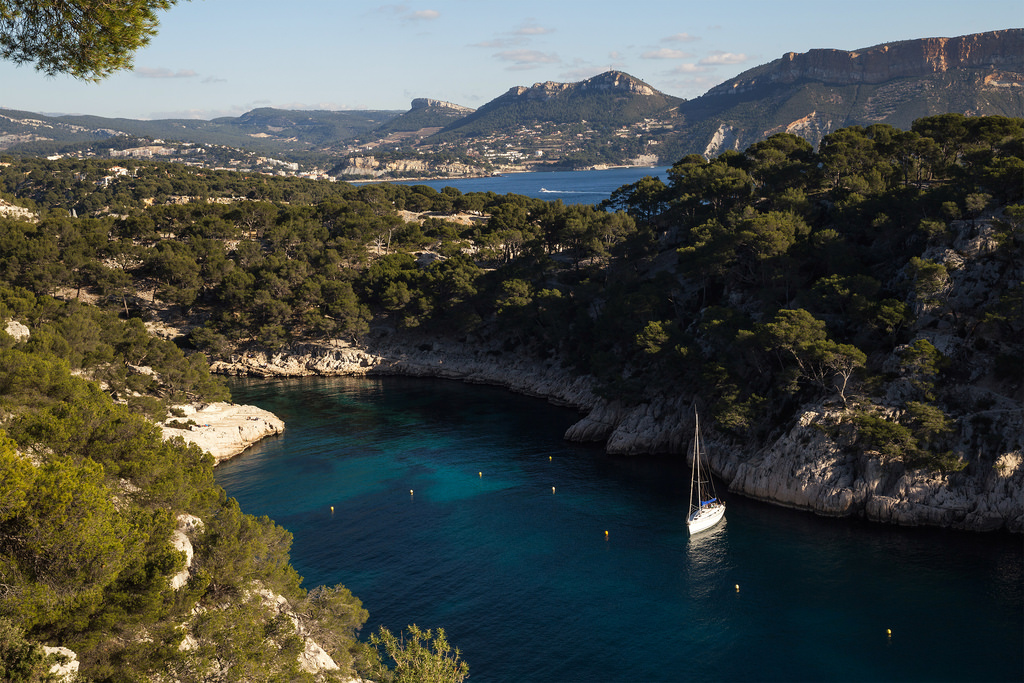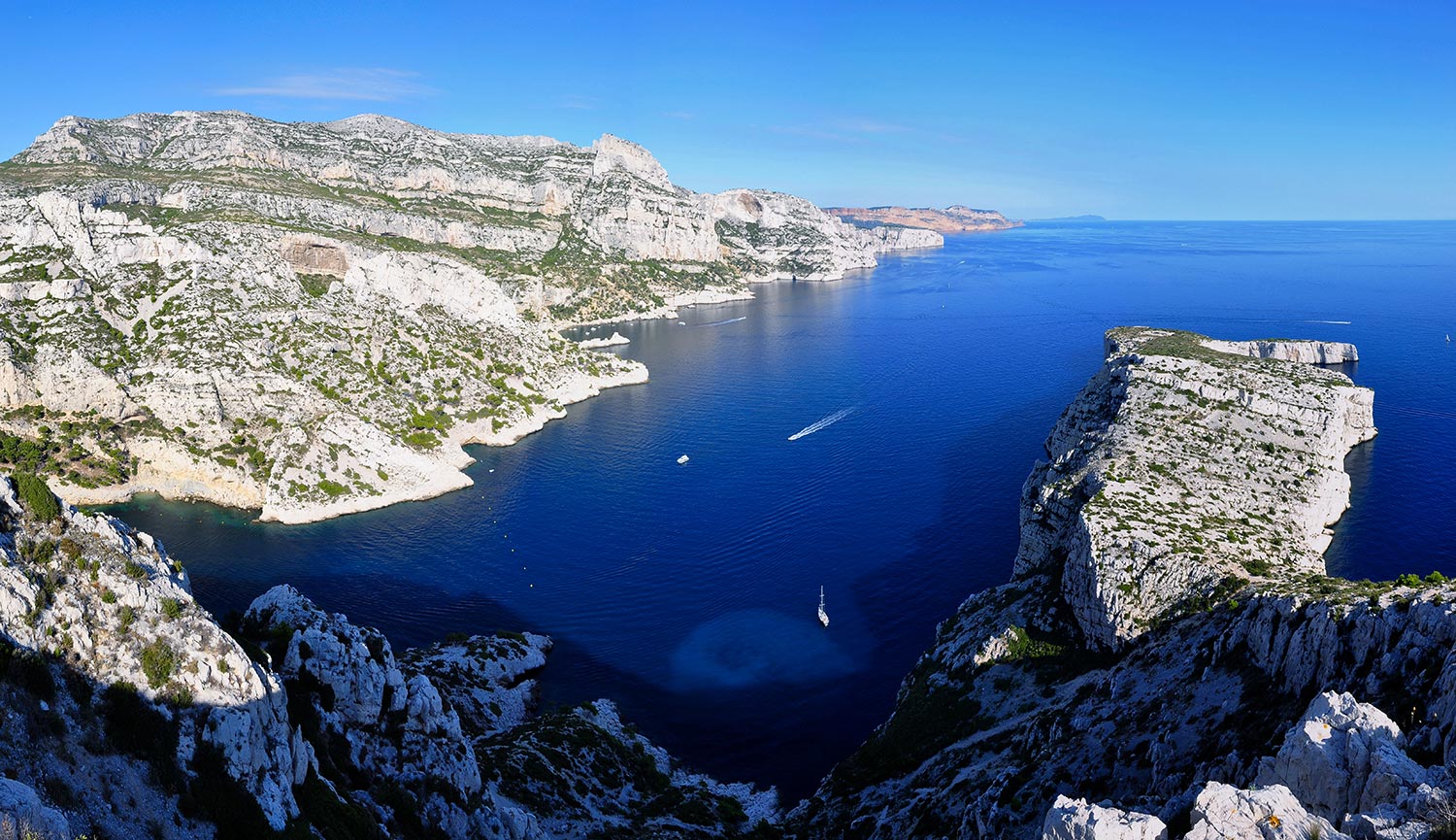Immersed in the aromas of Provence and framed by high verdant cliffs that seem to emerge directly from the transparent sea water, les Calanque de Cassis ideally embody the eastern limit of the Côte d’Azur. The calanques belong to the vast area of the Parc National des Calanques, the natural territory that extends from Cassis to Pointe de la Croiette, marking the border between the Côte d’Azur and the Marseille Blue Coast.
The park is subject to a series of special regulations designed to preserve the environment by limiting a series of marine and terrestrial activities. There is a prohibition on practicing water sports with the aid of a motor, such as water skiing or the use of a jet ski for example.
Beyond the protected area, there are still many calanques located along the coast between La Ciotat and Marseille, these belong to a complex called “Calanques de Marseille”.
Immersed in the crystal-clear waters of the Calanques, those who practice snorkeling and diving will find a unique and pristine spectacle of posidonia meadows, red coral, seahorses and many other species that inhabit these seabeds, with a total of 60 marine species and 14 different habitats considered rare throughout the European Union. If you are lucky, off Cassis you may also encounter white and blue dolphins, fin whales and sea turtles.

The marine area of the Parc National des Calanques is extensive, occupying a surface of approximately 43,500 hectares, therefore investing a few days discovering the treasures of this oasis is certainly a good choice.
For an intense but not overly long experience, you can explore the Calanques admiring their beauty during a day cruise. Navigation is mostly coastal without particular difficulties. However, it is important to always remain vigilant about winds that channel with a certain ease between the inlets and to be careful about navigation and anchoring limits.
To begin, you can depart from the Port Départemental de Cassis, which is a well-organized landing point, equipped with over 400 berths and a fuel supply service open all day.
From this point, sailing westward, you quickly reach la Calanque de Port Miou, a wonderful natural harbor with 480 berths, populated by numerous visitors and surrounded by high cliffs, where you can find some refreshment areas.
Leaving Port Miou and continuing the cruise westward, you find yourself near the Calanque d’en Vau, which shares its entrance with its eastern neighbor, the Calanque de Port Pin.
The Calanque d’en Vau is one of the most famous in the entire Park, with very high cliffs topped by lush Mediterranean scrubland, turquoise waters and excellent shelter from southern and northeastern winds. You must be careful of the navigation limits present for motor boats. Its neighbor, La Calanque de Port Pin, is equally striking, surrounded by maritime pines, from which it derives its name, offering anchoring possibilities strictly in the vicinity of its entrance. The panorama, at this point, becomes increasingly striking as you approach the islands of the Réserve Naturale de l’Archipel de Riou that stand out on the left.
Leaving the two calanques, you continue sailing westward and, leaving the Calanque de Morgiou to your right, thus reaching the Calanque de Sormiou, one of the most beautiful inlets in the entire Park. The sea is an intense blue and the sand is fine, the bay provides good shelter from western and northern winds, also in this case it is important to pay attention to the areas where anchoring is permitted.
Returning to the initial port, if you wanted to extend the route, weather permitting, you can leave Cassis and its nearby calanques behind to reach the easternmost and most fascinating inlet of the Parc National des Calanques, right near La Ciotat: the Calanque de Figuerolles, with very high reddish rocky walls, which offers excellent shelter from all winds except southern ones.



